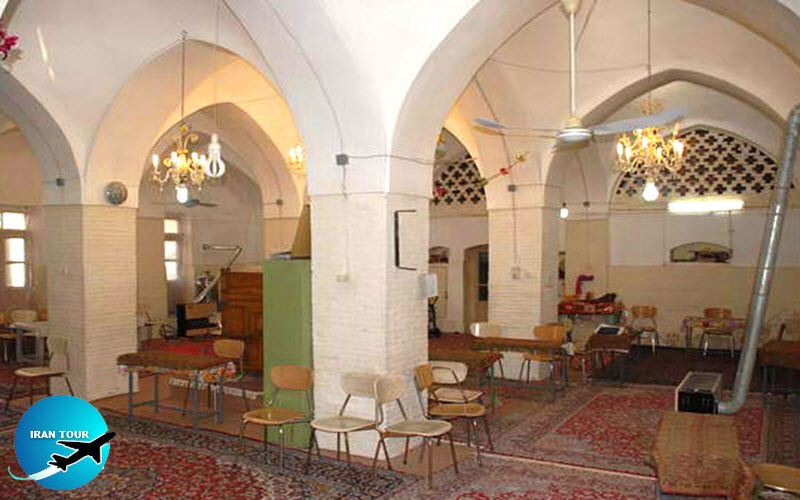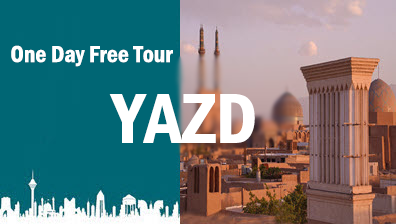Copyright 2020 - 2021 irantour.tours all right reserved
Designed by Behsazanhost
Molla Agha Baba Synagogue
Molla Agha Baba Synagogue
Jews in Yazd
Yazd, with its sacred buildings for all three Zoroastrian, Jewish, and Muslim religions in the heart of the old neighborhoods, has prepared the best conditions for the peaceful life of religions. The peaceful life of religions in Yazd is a very important issue not only in Iran but also in the world, which has been emphasized in the world registration of Yazd by UNESCO. The peaceful life of Zoroastrians, Jewish, and Muslims together, is one of the important features of Yazd, which attracts many tourists every year. The presence of the Zoroastrian fire temple in Yazd and the proximity of the Jewish synagogue to the Yazd Jame Mosque is the most important reason for the peaceful life of different religions with each other.
 |
The presence of the Zoroastrian fire temple in Yazd and the proximity of the Jewish synagogue to the Yazd Jame Mosque is the most important reason for the peaceful life of different religions with each other. Yazd is a city that has always served as a refuge and home for Zoroastrians. Under the Safavid rule, Zoroastrians were given high status so that they even had special rulers and their district was the largest in the entire city. The length and vast distribution of the Zoroastrian habitation in Yazd show that their relationship with the Muslims has been quite friendly. In fact, Zoroastrians used to and still live in a wide range of districts including Khalf-e-khan Ali, Khorram-shah, Na'imabad, Aharestan, Koocheh Boyuk, Nersi-abad, Tal district, Eysh-abad , Kheir-abad, Moobedan, and Kasnavieh. Yazd Jews also mainly reside in their own district located west and southwest of the Jame Mosque and interact with other citizens through business ties.
It is narrated that the Jews of Yazd had been living in the Yaghoubi and Maryamabad old neighborhoods of Yazd, and later, due to their trades, they tried to move to neighborhoods that were close to the bazaar. For this reason, they settled in the neighborhood of Masjid Jame. Now, this neighborhood is known to the Kalimian area and is connected to Imam Street on one side, to Masjid Jame Street on the other side, and to Bazaar Khan on the other.
There are 12 synagogues in the city of Yazd, one of which is the Mullah Aghababa synagogue, located in the Kalimian neighborhood near Chaharsooq(Bazaar). The historical synagogue "Mullah Aghababa" in Yazd was registered in the list of national monuments. This Qajarid synagogue consists of a courtyard include the summer and winter parts. The synagogue nave consists of 9 mud-brick domes and other parts do not have special decorations.
 |
Who was Molla Agha Baba?
Molla Agha Baba, the Chief Rabbi of Judaism, was the grandson of Rabbi Ur Sherga who lived during the reign of Fath-Ali Shah Qajar. Rabbi Sherga was said to be the one hundred thirty-five descendant of the prophet David. According to the Sherga family story, when anti-Semitism spread in Europe during the Renaissance, Jews unintentionally left their hometown to save their lives and families. Therefore, Sherga's grandfather named Rabbi Kias (Qiyas) emigrated to Iran and settled in Sabzevar. Over time, with the rise of the Safavid dynasty and the enactment of laws against Jews, Ur Sherga's ancestors, along with some Jews living in northeastern Iran, migrated to the desert areas of the country and settled. in Yazd.
 |
Rabbi Shmuel (the son of Rabbi Kias) had a son in Yazd and named him Ur. In Hebrew, the word Ur means light and brightness, and the word Sherga means light. The full name Ur Sherga refers to the eternal light of the Holy Torah. At the age of twelve, Ur Sherga became a rabbi and as a young man was able to take charge of the Jewish community in Yazd. At that time, Yazd was regarded as one of the religious centers and the birthplace of the Jewish leaders in Iran and was known as Little Jerusalem. It should also be noted that during that period, a great change occurred in the life of the Jews in Yazd.
Rabbi Ur Sherga married his wife, Maleka, and they had two sons named Shmuel and Moshe. Like their father, the sons of Ur Sherga passed the high ranks of the Jewish clergy and reached the rank of Harav. In general, the ancestors and family members of Molla Agha Baba can be named as follows, respectively: Molla Kias (Qiyas), Molla Shmuel, Molla Ur Sherga, Molla Shmuel, Molla Moshe (Molla Aqa Baba), Molla Ur, and Rabbi Yusuf Ur Sherga (Molla Yusef Yazdi).
Today, the grave of Molla Ur Sherga and her two sons, Rabbi Shmuel and Rabbi Moshe, are in a large lush garden filled with pine and olive trees that is today considered a Jewish cemetery in Yazd, known as the Harvar Ur Sherga shrine. The sanctuary enjoys beautiful design and architecture. The building is mainly in traditional cream and brown colors. The tombs and shrine are highly respected among Persian Jews and every year, especially on the anniversary of the death of this Jewish scholar, many Jews from all over the world come to Yazd to visit his shrine. Of course, due to the lack of space within the sanctuary, visitors must enter and visit in order.
 |
About Molla Agha Baba Synagogue
In general, a synagogue is a place where Jews pray or perform religious rituals. The Molla Agha Baba Synagogue, as a religious and historical attraction, has a variety of attractive features, some of which include:
-This synagogue includes a courtyard called Tabestan Khaneh (summer house) and a roofed space called Zemestan Khaneh (winter house);
-The four sides of the courtyard are built symmetrically and each side includes three parts (porticoes and vestibules) that are roofed by simple barrel vaults;
-In the shabestan (roofed space) of this synagogue, there are nine arches. The columns and walls are covered with bricks to a height of one meter and the outer walls, facing the alley, are made of straw;
-The traditional architecture and the wonderful plaster ceilings of this synagogue attract the attention of all the spectators;
-The Molla Agha Baba Synagogue has two entrances: one opens to the alley on the south side and the other opens to the alley on the western side;
-The east side of the shabestan consists of a brick section that divides the interior space into a half-story section that was probably used by women;
-In this synagogue a Sefer Torah is kept. The word Sefer is a Hebrew word that means a large book and refers to the five books of the Hebrew Bible. In fact, Sefer is a handwritten version of the Torah that Jews use during their prayers. When her prayer begins, a spiritual and mystical state prevails in this synagogue;
-In the shabestan, there is an image attributed to Moses. In this image, Prophet Moses is holding a scroll containing the Ten Commandments;
-In the Molla Agha Baba Synagogue, there is a special candle-lighting room where the faithful light a candle and pray.
- Details
- Category: Yazd Historical Sites